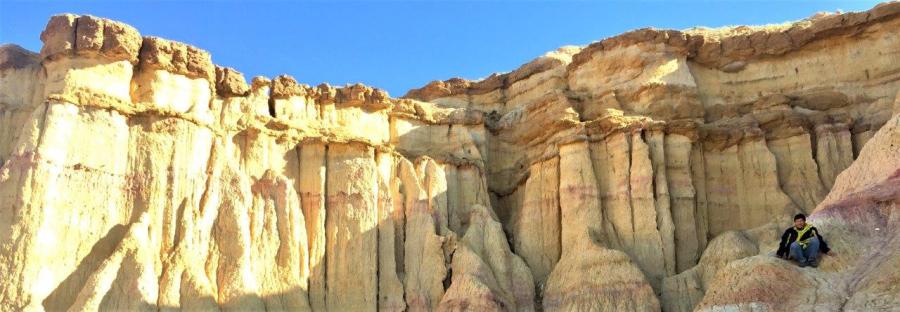Though I was expecting another day of interesting sights I was not prepared for a 400m-long jigsaw of white-sand cliffs, streaked with a kaleidoscope of pastel shades ranging from purple to red and orange.
Tsagaan Suvarga (White Stupa) is a line of cliffs formed by the fracturing of the earth’s crust millions of years ago. The stupa rises to the sky at an angle of 90°, is over 60m tall at its highest point and stretches over 400m in length. The colourful stripes on the imposing buttress-like structures are due to various sedimentary deposits exposed by wind erosion.
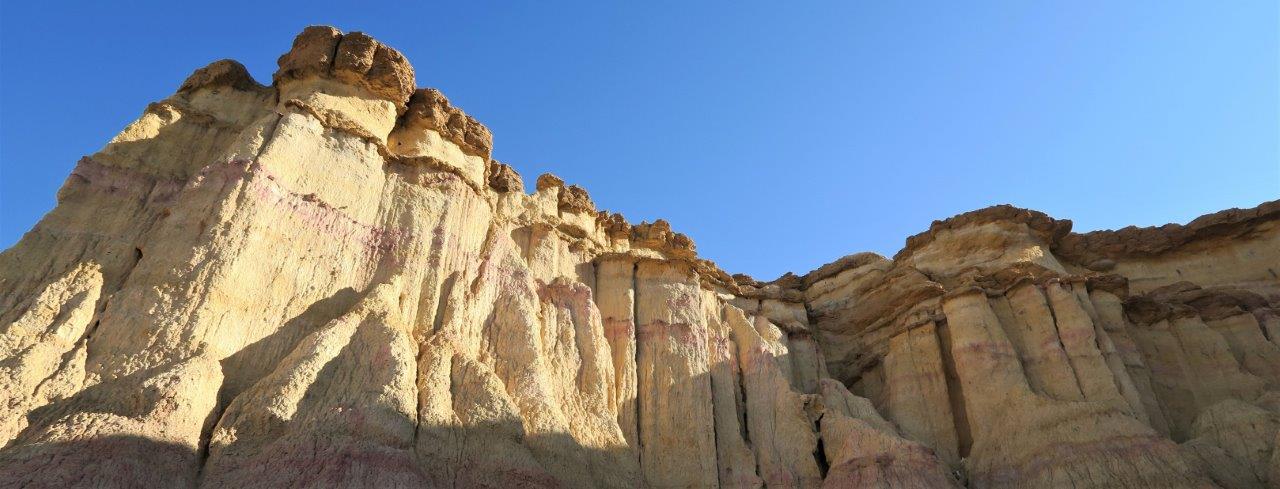
Tsagaan Suvarga is named after the 60m-high cliffs that looks like ‘white stupas’ from the valley. It is believed that this was once the bottom of a sea. After the sea drained out, a colourful seabed rich in marine fossils and clam shells was left behind.
After 7 hours driving on open steppe, we arrived at the bottom of the canyon. We quickly made our way up the many low hills to the foot of the escarpment.

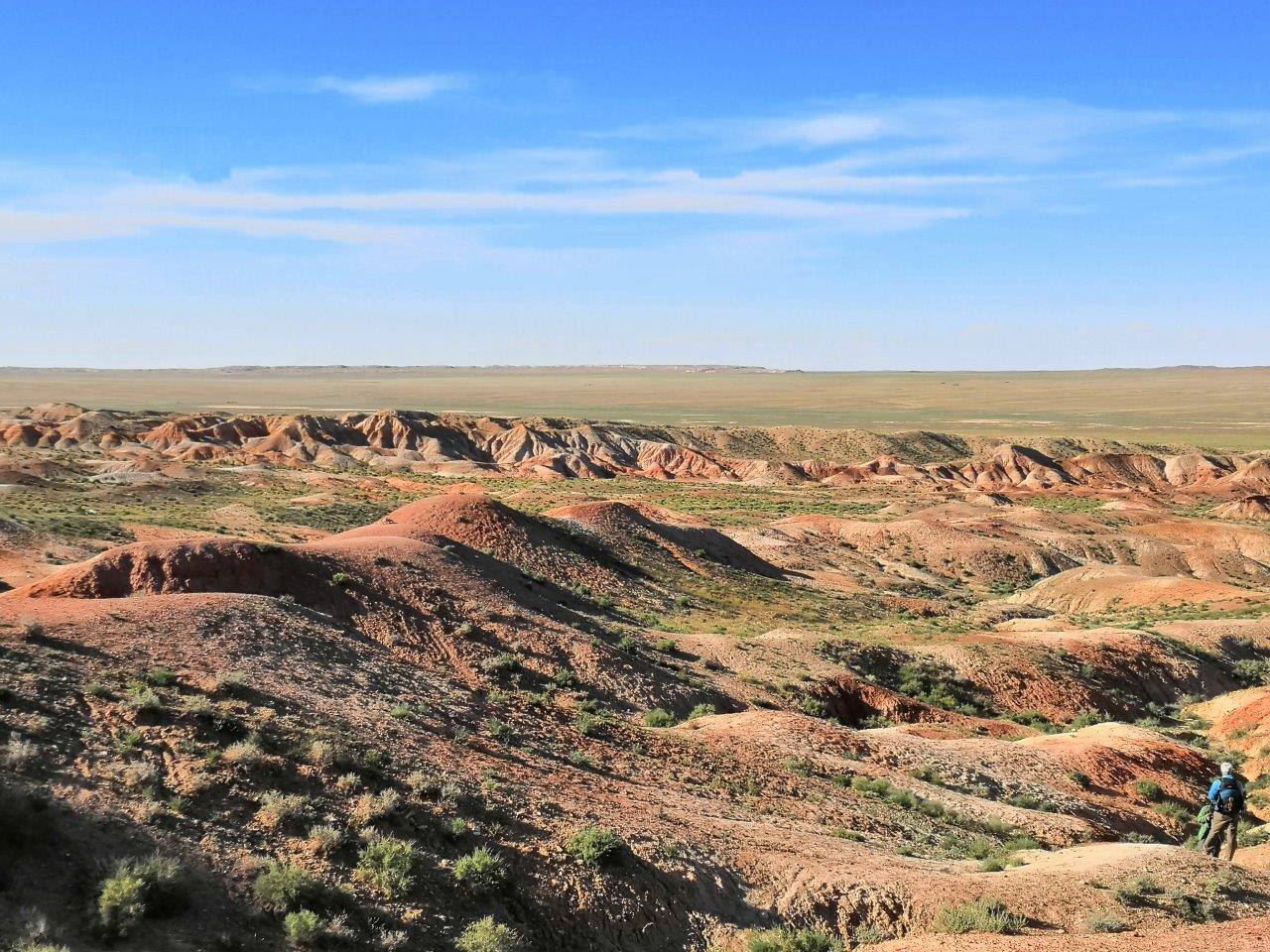
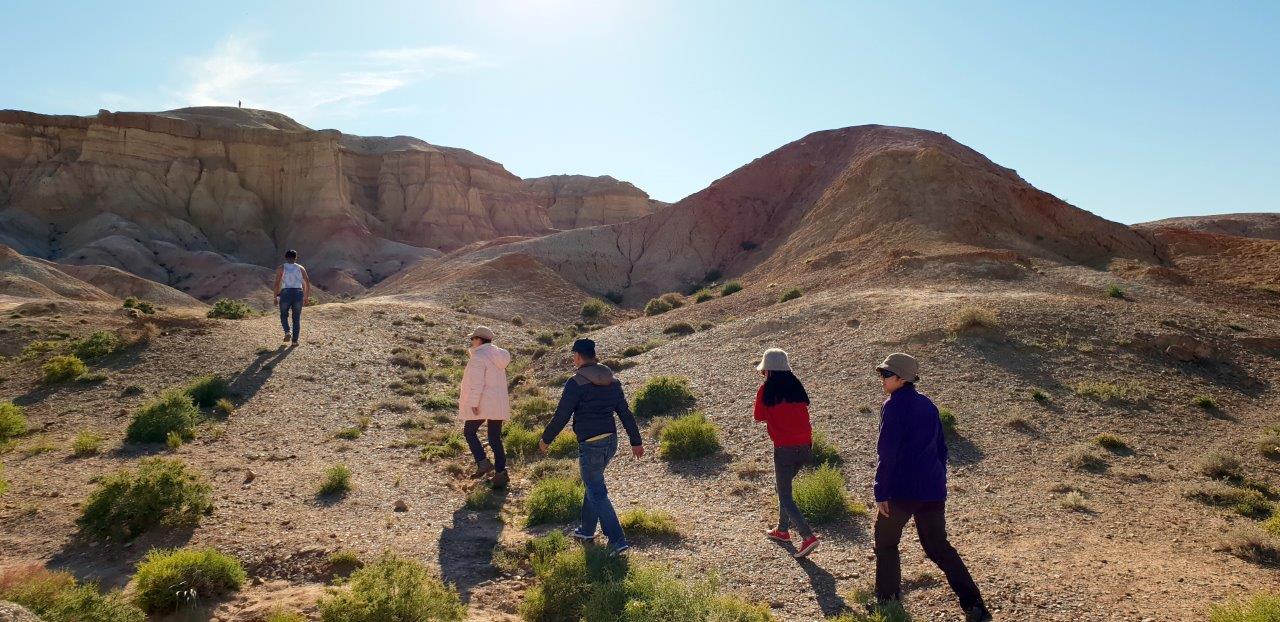
Looking up at the towering rock face, we marveled at the natural wonder created by the wind’s enormous power and water erosion over millions of years.
I couldn’t get enough of the strangely shaped formations, with its ever changing facade as we headed right and climbed higher. Up close, it was amazing to see the different limestone layers. We even found some sea shells!
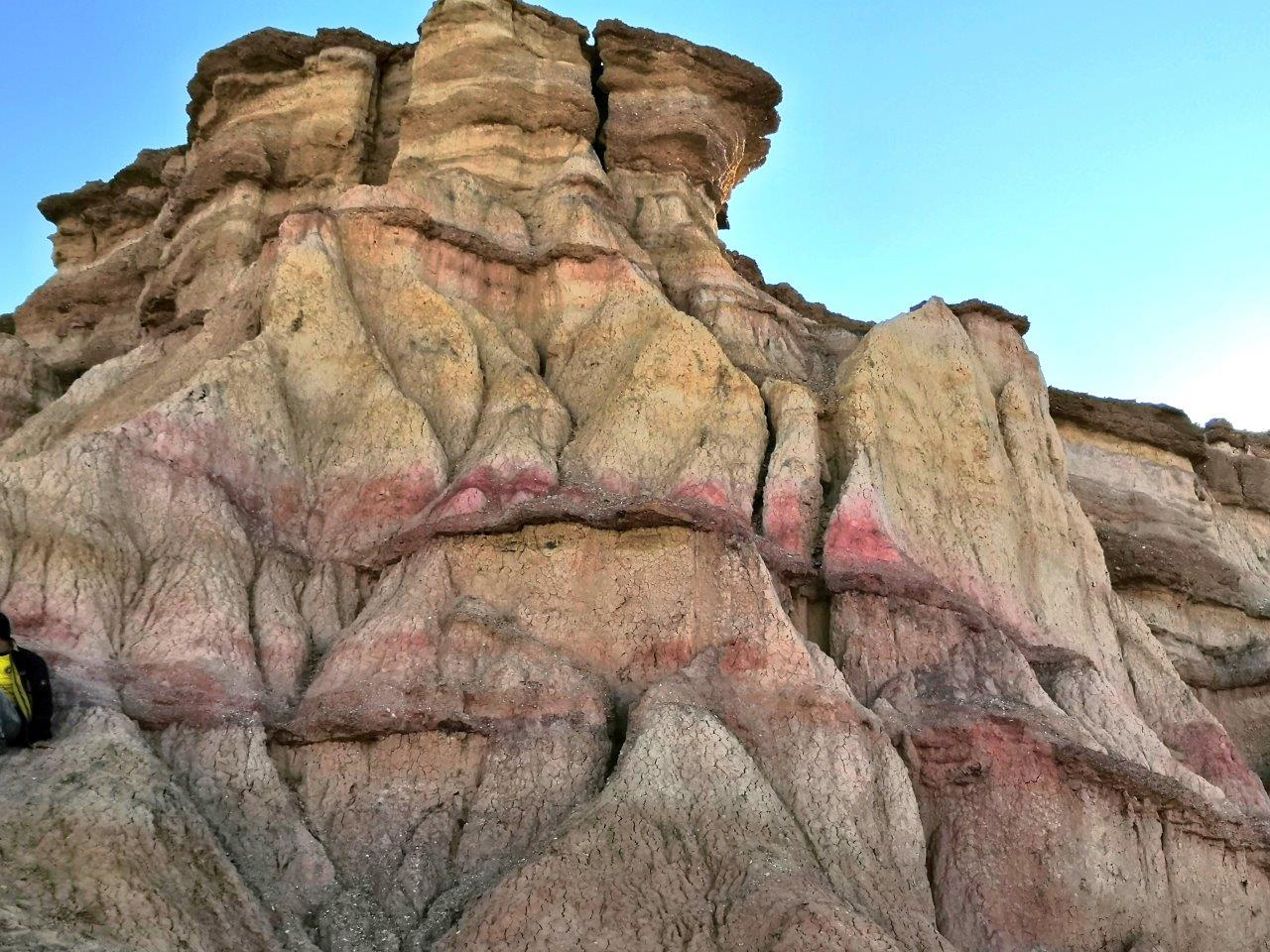
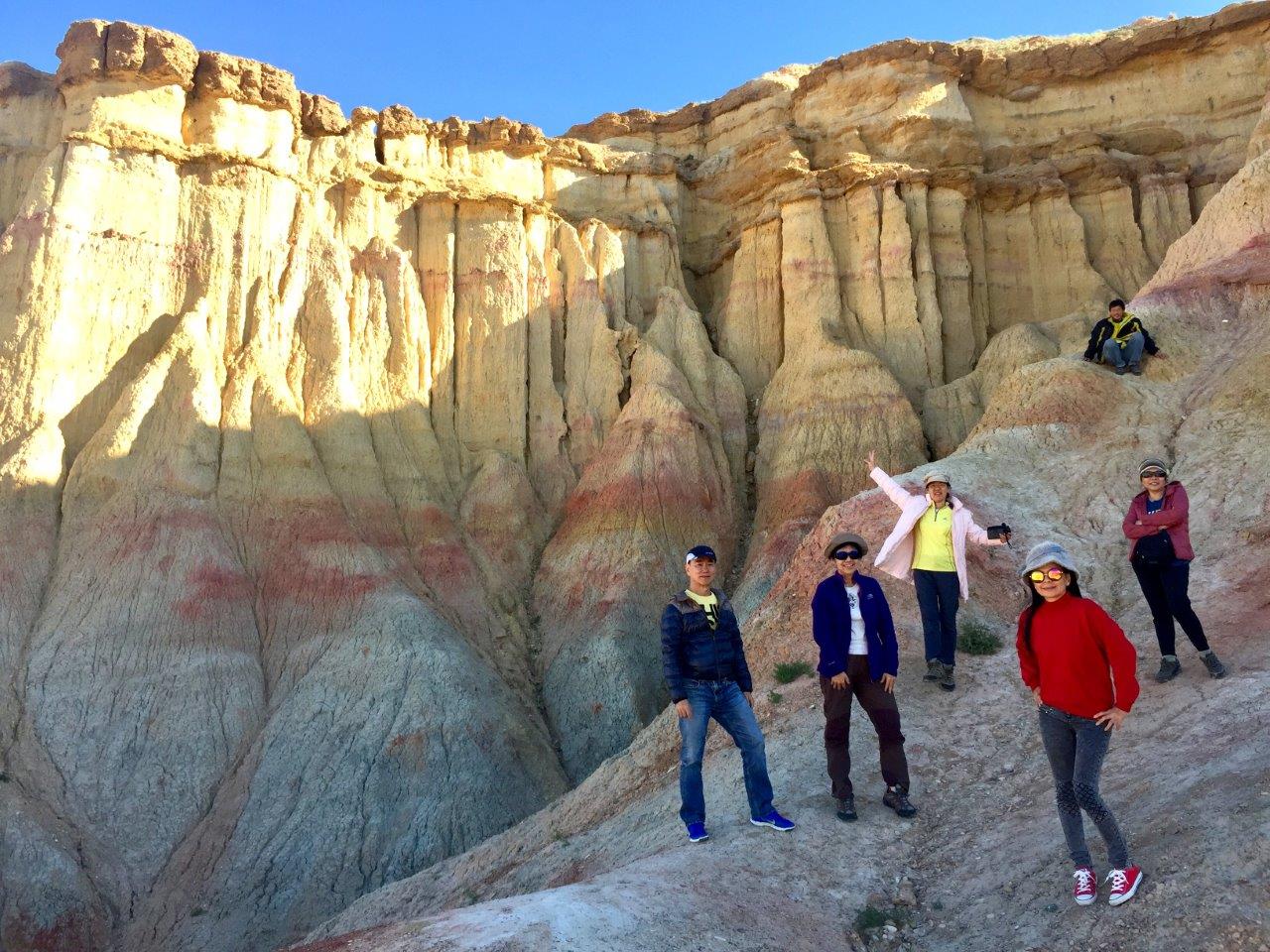
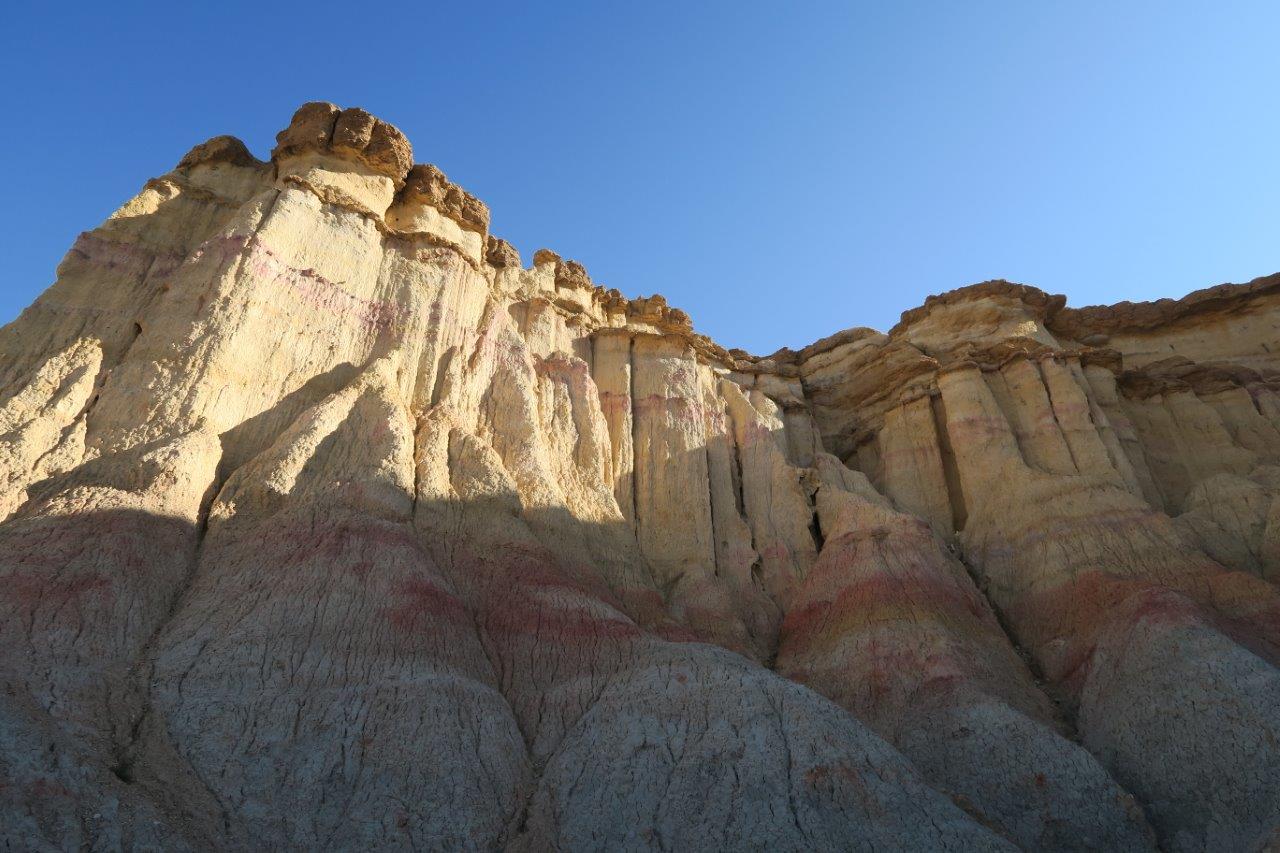
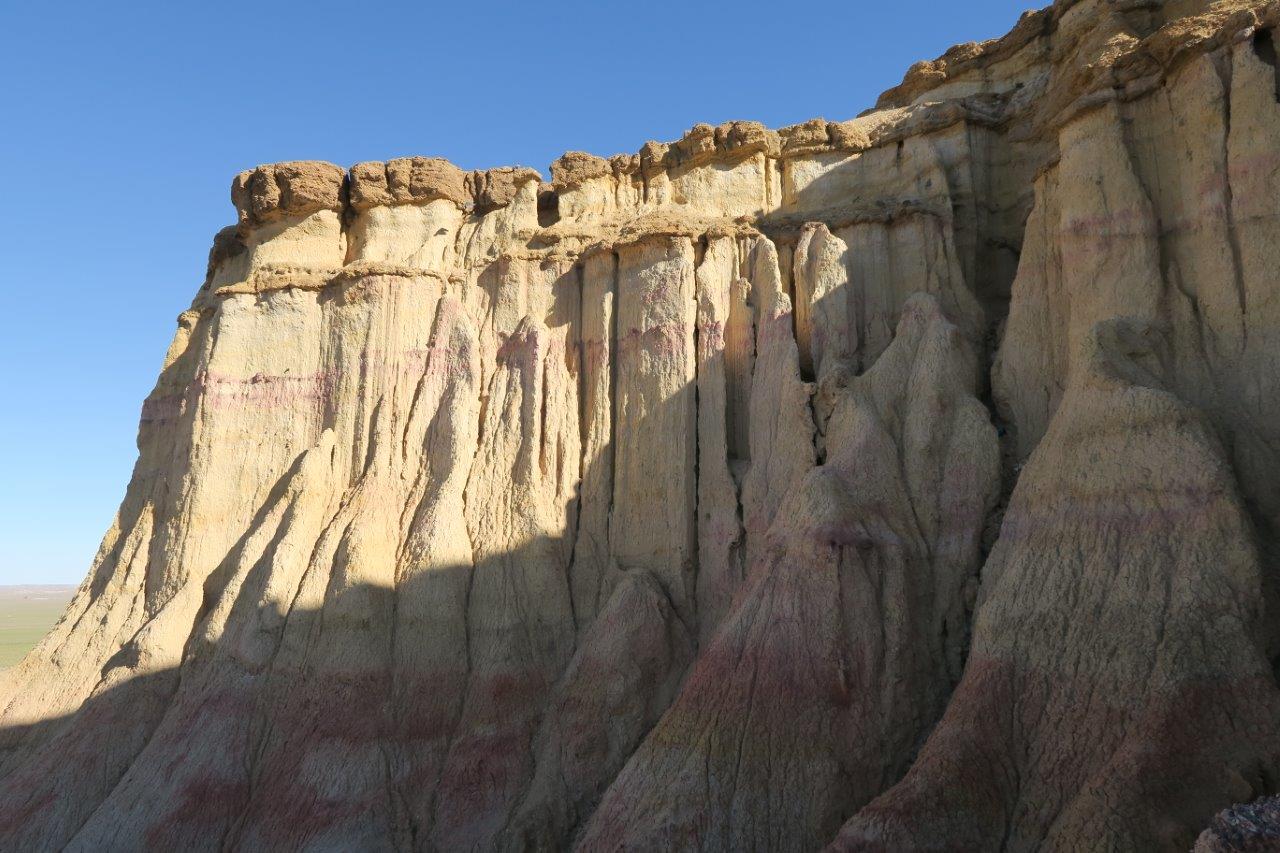
I followed the trail as it turned left and upwards. Though it was steep, I was distracted by the dramatic sheer slopes on the way to the top. And there waiting for us on the plateau was our driver Lhagvaa with his trusty Russian Van ‘loaf of bread’. I had spotted his silhouette when I looked up from below earlier.
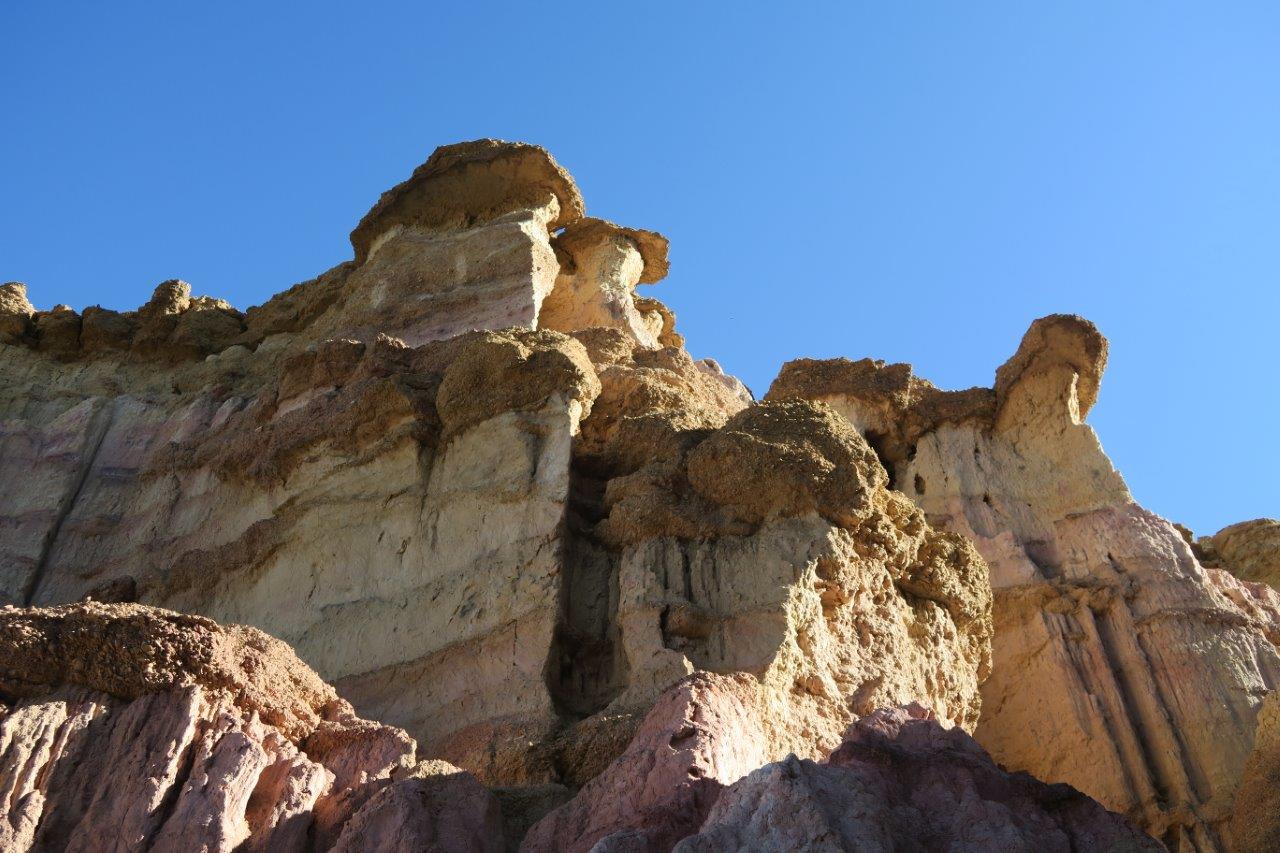
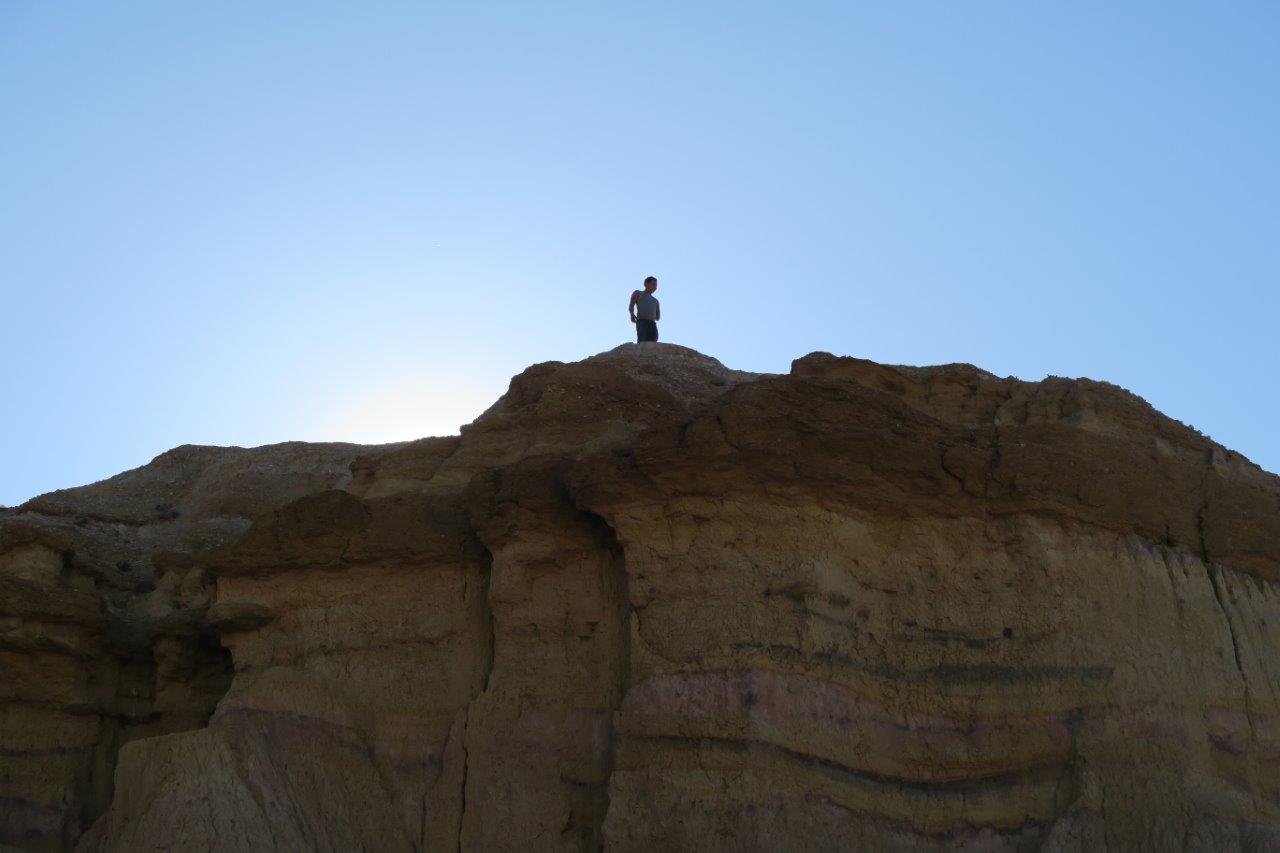

From the top, we were struck anew by the panorama of colourful low hills we had clambered over 30 minutes ago.
Beyond that, more white sand streaked with minerals, formed a rolling landscape of peaches and cream before gradually flattening into the green open steppe and big sky plains.
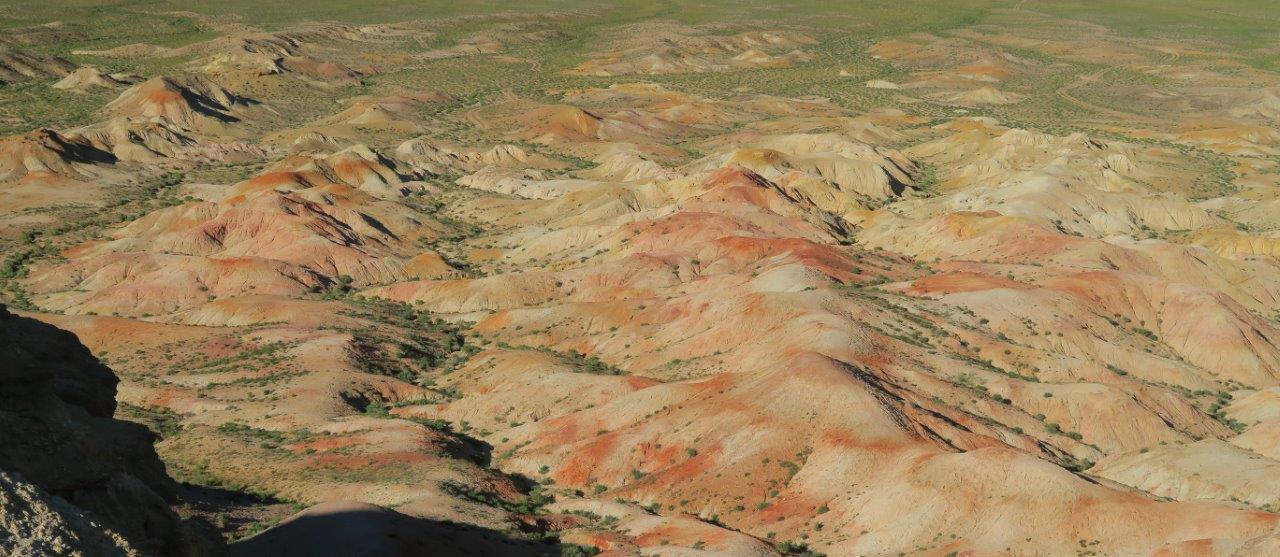
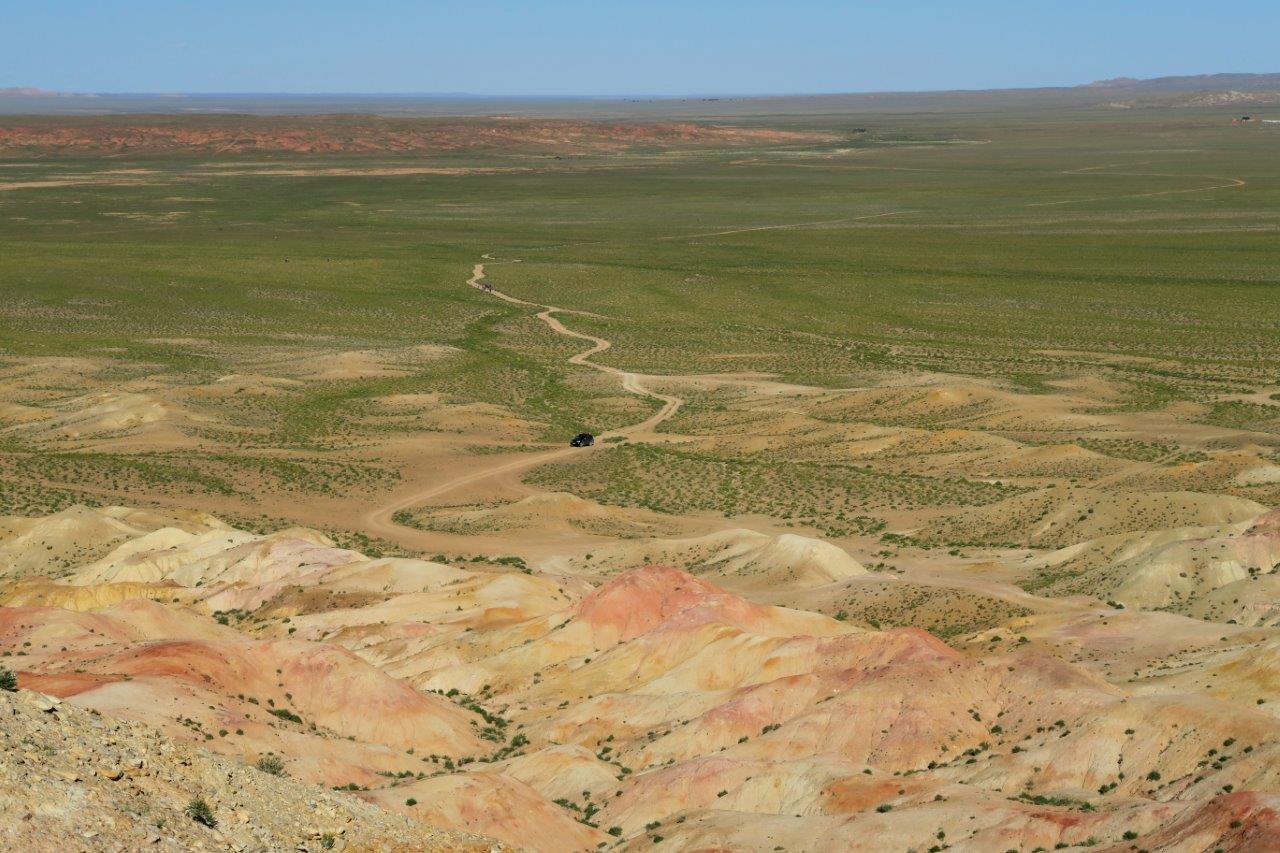
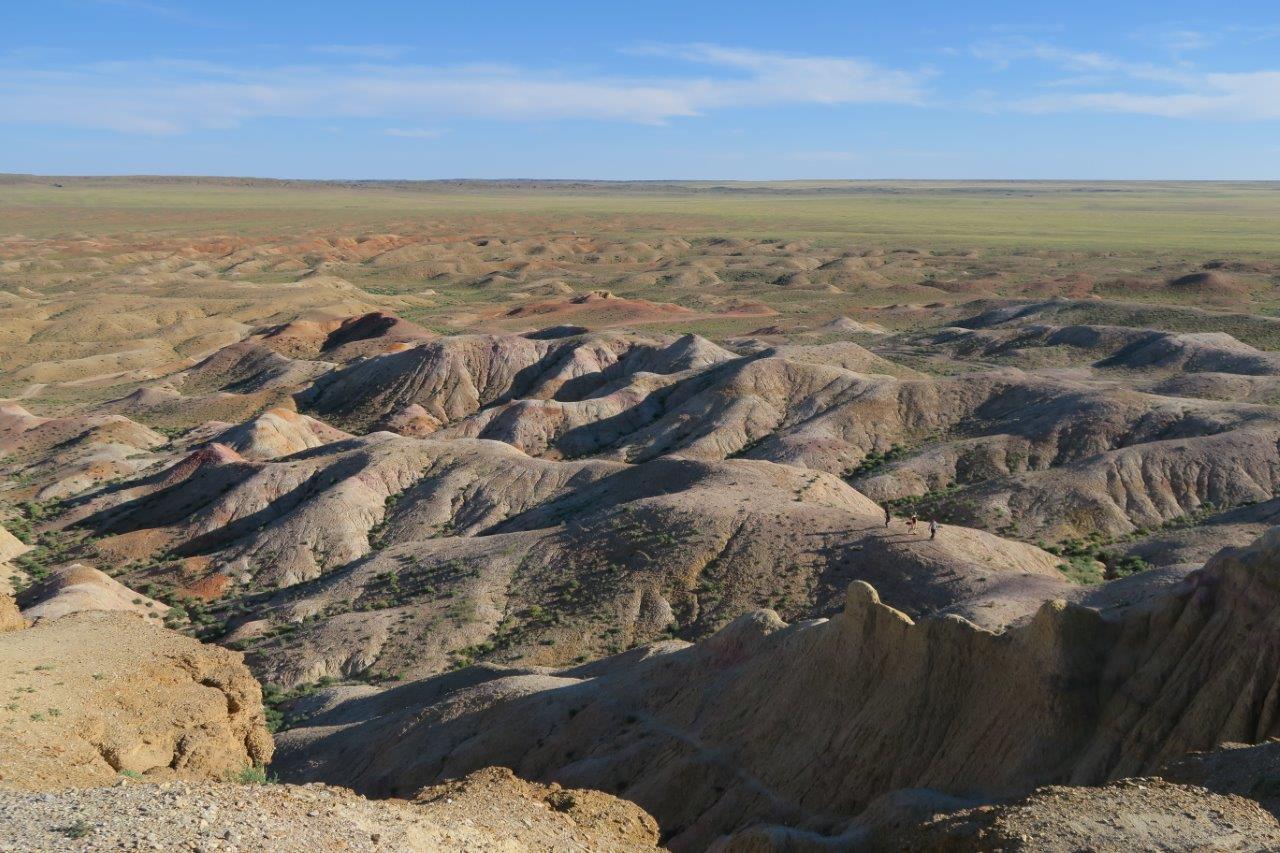
Though we did not wait for sunset, the dusks and dawns must be excellent at this spot.
There are numerous hiking trails at this unique geological feature. You can explore the cliff top and the rolling hills below.

Tsagaan Suvarga, Dundgovi Province This huge limestone formation is 60 meters tall with a 90° brink and continues for an impressive length of 400 meters. When it rains, the torrent of water that flows down the stupa looks like a massive waterfall. Millions of years ago, Dundgovi Province was at the bottom of the sea. Today, the dried-up seabed contains many sedimentary limestone layers and is rich in marine fossils. Millions of years of wind erosion also created high cliffs at 90° incline with sheer slopes in a mixture of soft hues. Tsagaan Suvarga is located 419 km to the south west of Ulaanbaatar city, in Olziit soum of Dundgovi province.
Bactrian Camels of Central Asia
We did manage to catch the sunset at our Ger Camp with Bactrian Camels instead.
It was our first intimate encounter with the twin-humped camels of Central Asia, as they were herded in to be milked before sundown and tethered for the night.
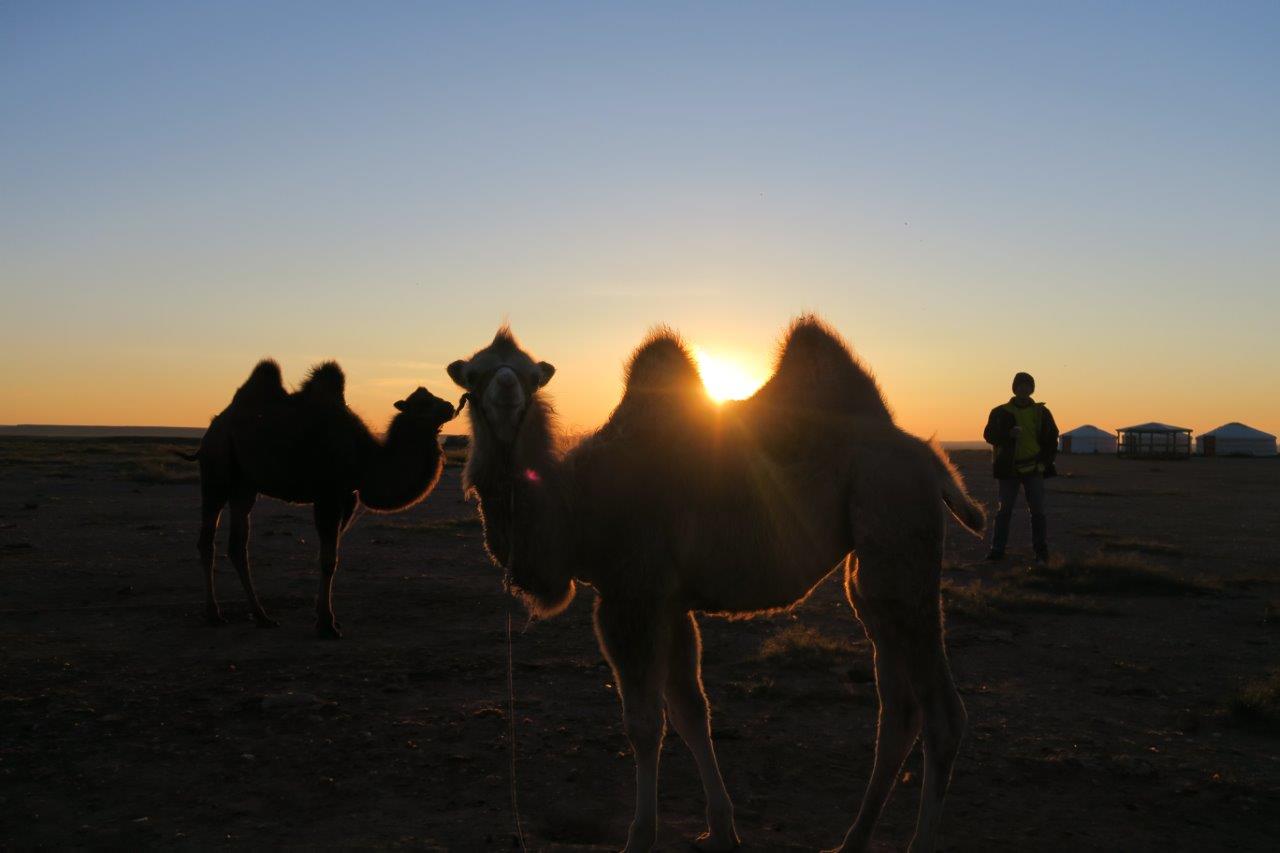
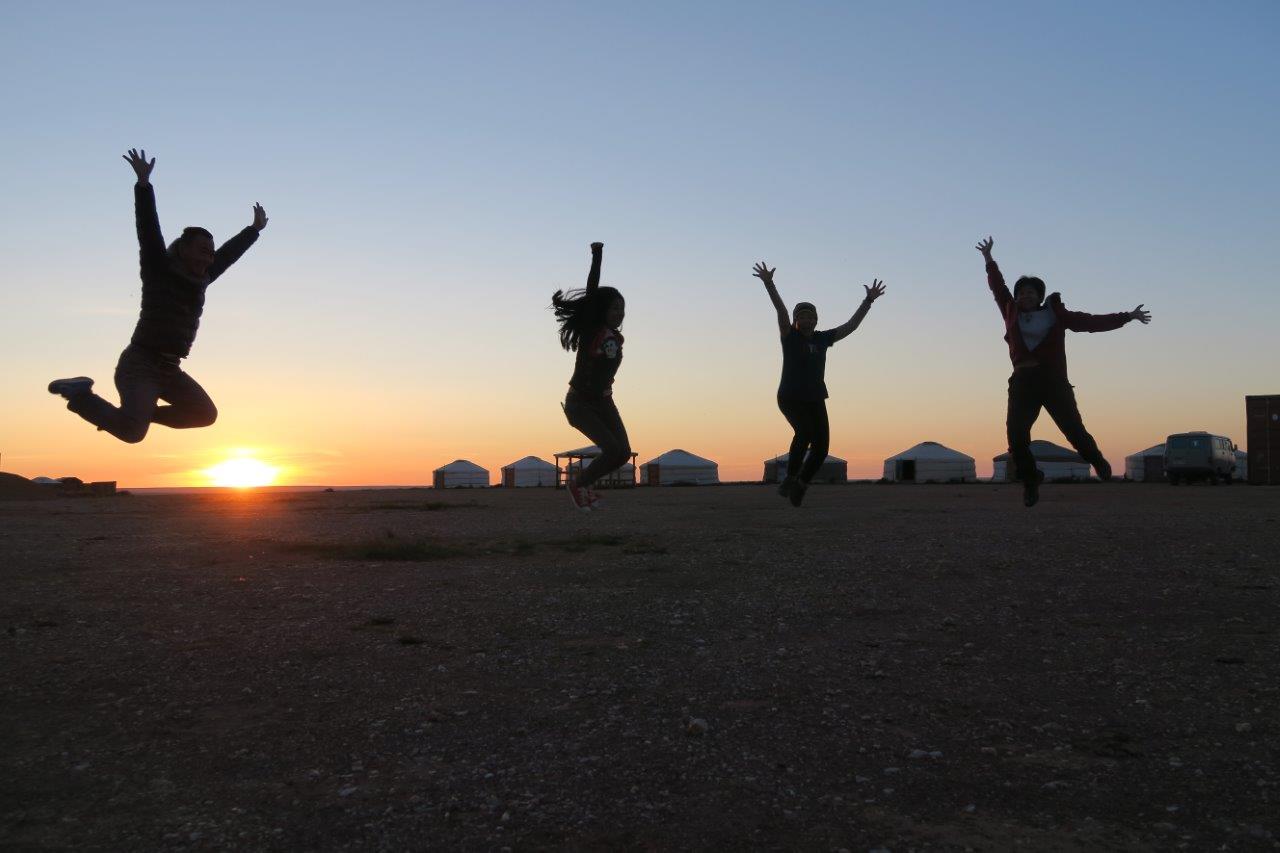
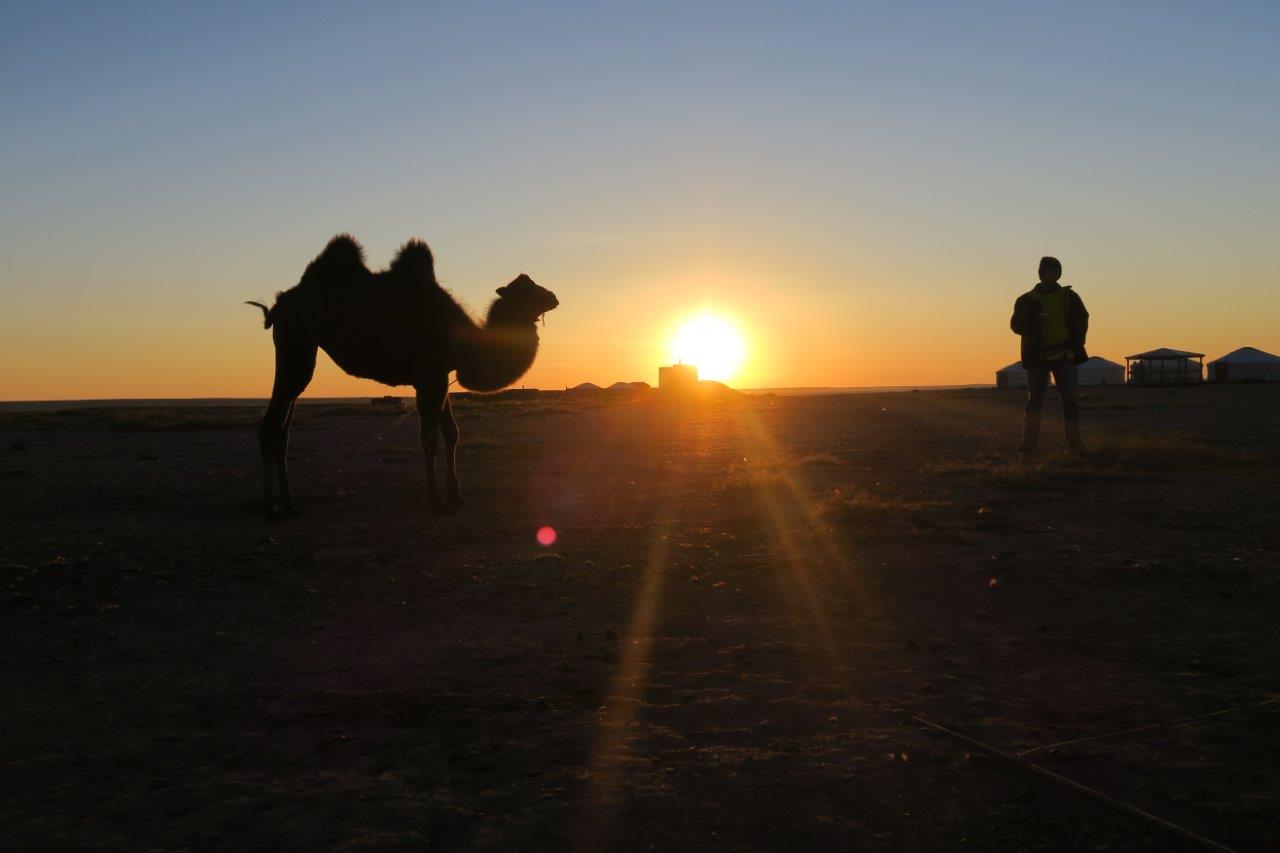
Bactrian Camels have two humps for storing fat which can be converted to water and energy when food and water is unavailable.
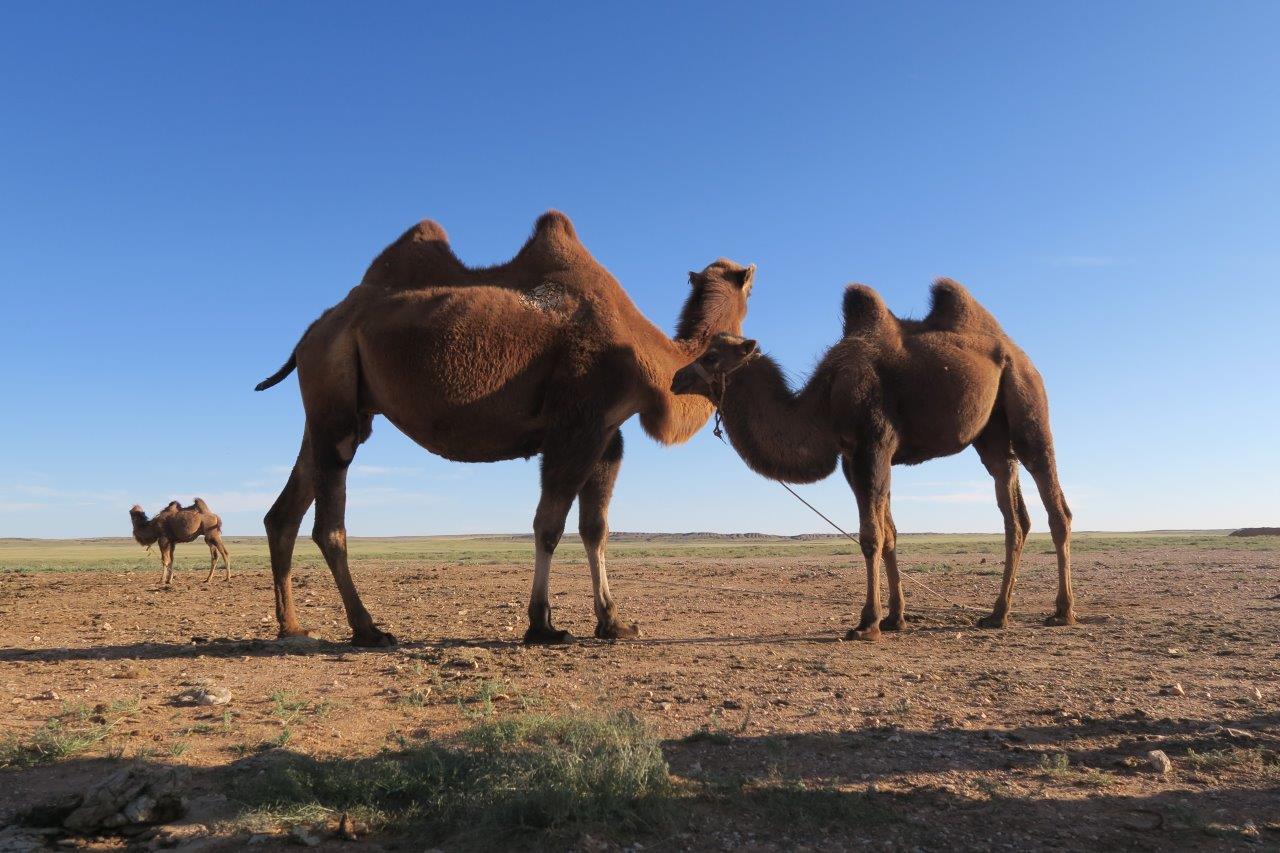
The humps become floppy and flabby, as the fat depletes.
Juvenile Camel calls for Mum
Did you know that the camel’s rumbling growl was one of the noises used to create Chewbacca’s voice in the “Star Wars” movies? Camel sounds include a variety of moans, groans, high-pitched bleats and deep, throaty bellows.
Visited 12 September 2018
